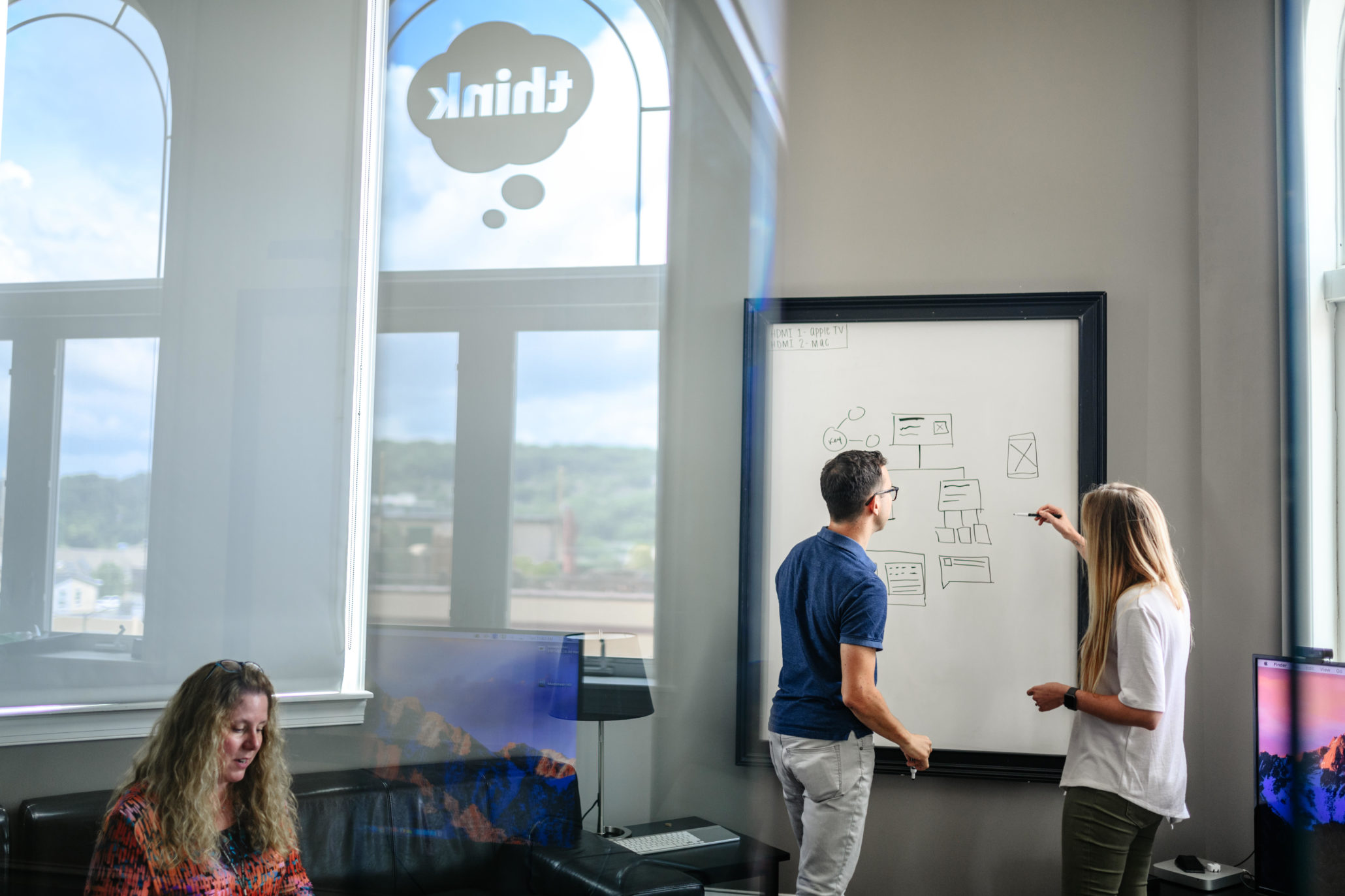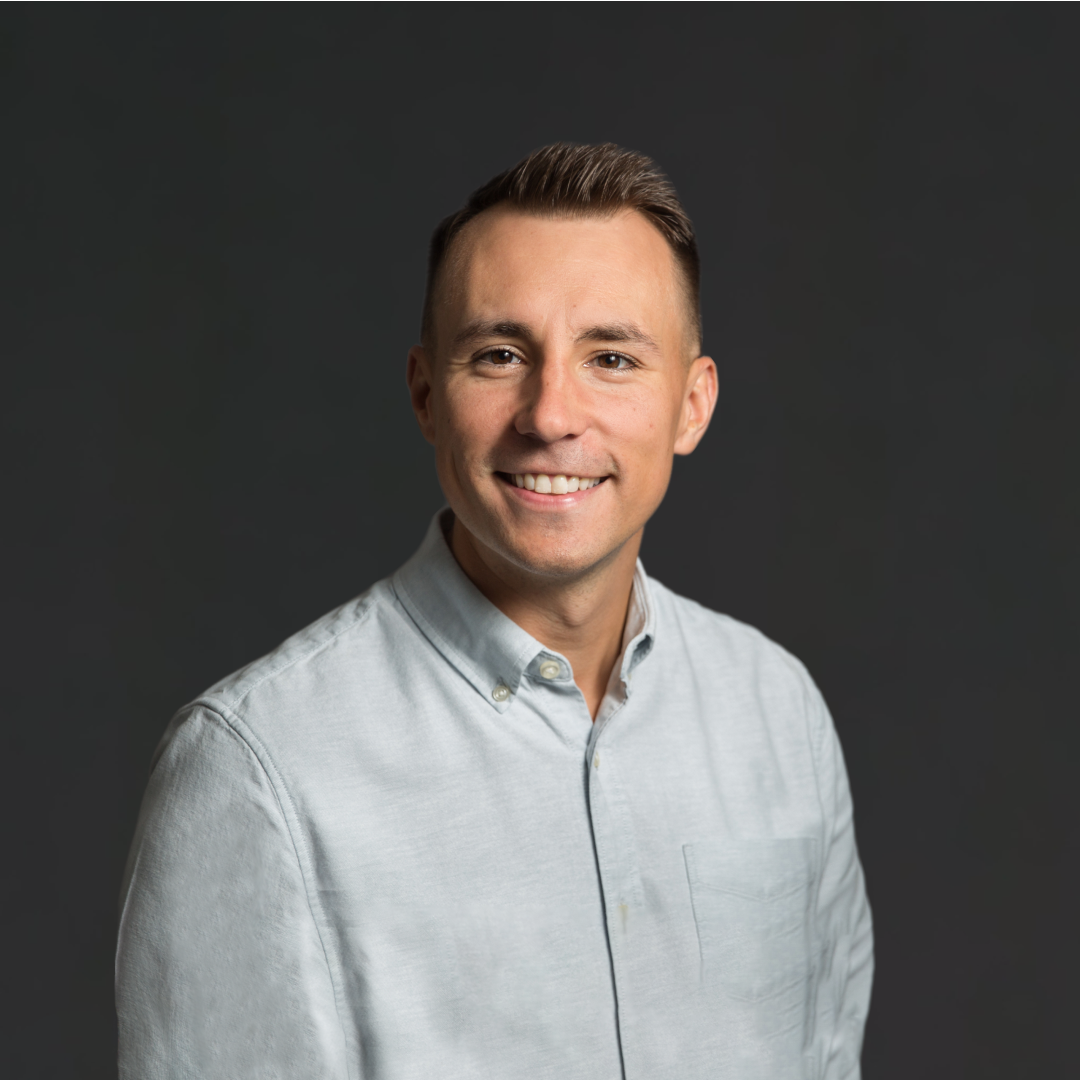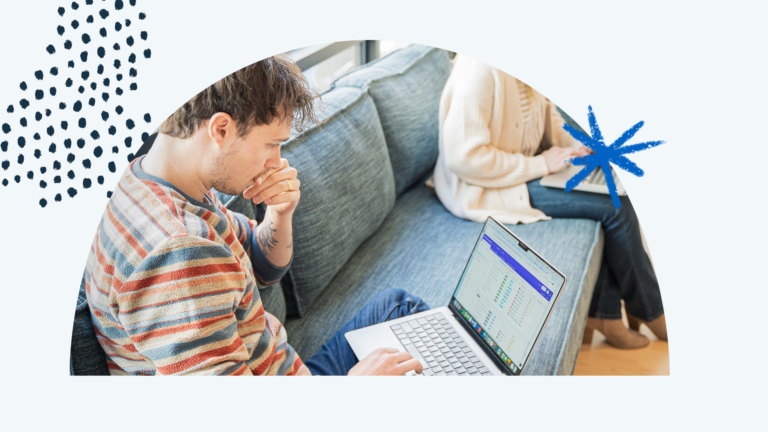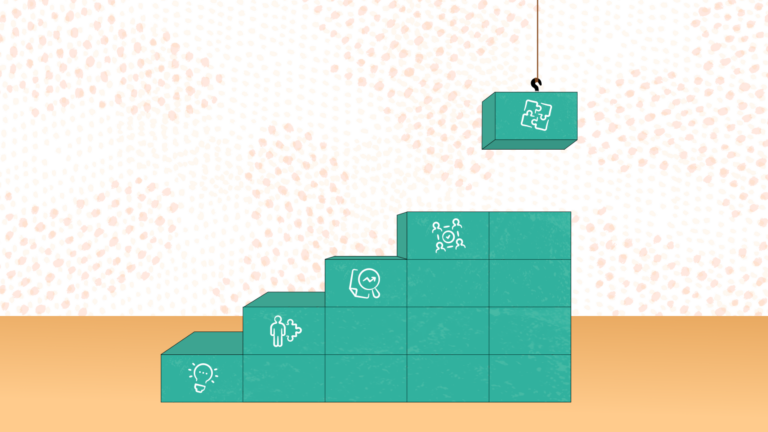How to plan for flexibility in design research

Jumping into a new design research effort often brings anticipation, excitement, and the potential to discover unmet opportunities and new directions to take a project. This potential is always grounded in a solid research strategy—the goals, methods, and people, all planned out.
But in the course of a research project, designers are usually looking to learn from many different people: business leaders, employees, customers, and anyone else with a perspective that gives insight into the core questions and goals. Having such a wide variety of participants introduces countless variables into a research strategy, and it’s almost impossible to get through a research effort without something outside of our control throwing a wrench into our plans.
Typical research obstacles include:
- Recruiting and scheduling the right people at the right time
- Planning to use technology or tools that are new or unavailable to participants
- Time or budget constraints that don’t align with an ideal research approach
- Something new that can’t be predicted
While it’s tempting to try to craft the perfect research approach and adhere to every carefully-planned detail, it’s more important to plan to be adaptable from the onset and conduct research with a degree of built-in flexibility. By anticipating common constraints of user research, you can ensure that you’re always learning and gaining valuable insights to inform design decisions.
Here is how design researchers on our team have adapted to some of the most common research challenges we’ve experienced.
Common Research Challenges and Ways to Adapt
Challenge: Participant availability doesn’t align with the ideal research timeline
People are busy and their time is valuable—and participating in in-depth research is a lot to ask. During a recent research effort, our team planned to do a handful of hour-long, remote interviews with participants in which we would share our screen and look at design assets together while discussing and capturing feedback. We found out that some participants would only be available for 20-30 minutes at a time—and in a few cases, they’d be in transit or driving between meetings.
How to adapt: Find ways to shift the interview format
Since our plan of screen sharing for an hour wasn’t feasible, we shifted our approach and goals to accommodate shorter, audio-only sessions. We got to the point quickly, asked direct questions, and considered what was most important to discover during a 20-30 minute phone conversation. While our research discussion guide included a review of mockups and a discussion about how they would be used in a sales process, we were still able to ask pointed questions about the sales process itself and how it could influence our designs.
When interview formats need to shift, make the most of the time you can get from research participants—and use your UX empathy to meet people where they are.
Challenge: Niche audiences are difficult to reach
Good research findings rely heavily on talking to and learning from the right people. When those people have very specific qualifications, it can be especially difficult to connect with them in the first place. We were recently challenged with interviewing consumers who had been exposed to a newly-launched, in-person seminar given by various financial advisors. Typically, we have a few recruiting pathways we can try to find participants, like connections through our clients or third-party recruiting firms that screen their own panels of general populations.
In the example above, we knew this specific group of people existed, but there weren’t enough of them—and they were too many steps removed from our connections. We would have needed to find the sales teams pushing this seminar, then find the individual financial advisors using the seminar, then find the consumers who have been exposed to the seminar. Given our timeline, putting in the extended time and effort to find them just didn’t feel practical.
How to adapt: Think creatively to find expanded but relevant audiences
Instead of focusing too much on a highly-specific and challenging audience to find, think instead about the types of people whose goals or experiences are most similar to your target audience.
In this example, instead of finding people who had been directly exposed to the seminar, we thought about the people who could be the target audience for the seminar. We knew we could find people within a certain proximity to retirement, who work with financial advisors, and who had a minimum net worth. Framing the audience in this way helped us realize we could get valid feedback from some of our co-workers or find referrals through our networks. We exposed them to the seminar material first, and we were able to get authentic reactions and uncover opportunities to evolve this experience for future customers.
Challenge: Participants have trouble accessing research tools and technology
Because of the nature of UX project work, we often rely on digital tools to supplement our research efforts—especially when we need to be fully remote while interviewing our research participants. Users in certain industries (e.g., government, healthcare) are more likely to have restrictive firewalls that prevent them from joining a web conferencing platform, sharing their screen, or accessing unmoderated testing software that requires downloads or browser extensions. Other participants may be less technology savvy, and we need to account for time to walk them through using a new tool and getting comfortable.
How to adapt: Create a plan, and a backup plan, for every step that requires technology
In live, moderated research sessions, it’s important to assume that your technology setup won’t always go according to plan. Build in time to account for tech troubleshooting, and identify a point of contact for technical issues when possible (ideally, a note taker or observer). Have backup plans you can turn to in the moment, and always test them ahead of time.
During remote usability testing, it’s important to observe the user interacting with a product, but we’ve also encountered participants who were blocked from sharing their screen once they joined our conferencing system. To work around this, share the test material on your screen, navigate through it, and ask the participant questions to get general feedback on the product. (Note: we wouldn’t recommend this solution for a usability test if incentives for completion are involved, but with certain difficult-to-schedule audiences, or when incentives aren’t possible, try to take advantage of any time you can get with users.)
In a case like this, you’re likely deviating from the “ideal research plan” for a usability test—a shared view of the user’s screen that allows you to observe the participant’s interactions. But this flexible approach still allows your team to learn something and respect the participant’s valuable time once they’ve joined the meeting.
Challenge: Time and budget don’t permit the ideal research method
In an ideal world, we’d always like to observe and talk to users in-person—in the environment where they’d be using the product or service. Contextual inquiries provide different insights beyond what we might capture from remote research. What are users’ environments like? What processes, workflows, or distractions are involved in their daily tasks? What tactile considerations impact our design? (For example, would people be using a mobile app in tandem with a scanner to receive a shipment of physical products?) But traveling is expensive and time consuming, and sometimes not an option, so in-person field research efforts aren’t always realistic.
How to adapt: Consider alternative research methods that could be layered together
If in-person research isn’t possible, take a step back and ask what other options exist to get the answers you need in a different way. A collaborative, remote workshop could allow teams to map out a complex workflow by asking questions that dig into the details of what’s happening and why. Conducting a diary study could help to understand users’ behaviors and in-the-moment reactions. While these methods don’t provide the same immersive insights as in-person research, pairing a few alternative methods together is a practical alternative that will enable you to keep learning despite lean time and budget constraints.
Challenge: Research conversations may be seen as a threat to employee or customer relationships with a company
Understandably, stakeholders who own customer relationships might feel hesitant about a group of new consultants (or someone from a different internal team) talking to their current or potential customers. They may be thinking, You’re really going to show a customer this unfinished wireframe? What if they don’t like the redesign?
How to adapt: Budget the time to mindfully build trust
Start slow and bring stakeholders along for the research process. This can take more time, but sharing research plans or even conducting research with that individual can help build trust.
For example, when working with financial services clients, we sometimes conduct research with internal wholesalers first. Even if we’re designing a product for financial advisors and ultimately their end clients (investors), having conversations with wholesalers helps them to better understand our approach and see the value in us talking to the financial advisors they have spent so long building relationships with. After the initial research—and if we’ve done our jobs as consultants—they should be thinking, OK, I trust you now. There’s no harm in showing low-fidelity designs, and yes, we need to hear from actual end users!
Overall, Stay Focused on What You’re Trying to Learn
Continually checking progress against your goals, maintaining a flexible mindset, and having options to fall back on ensures that you can adapt when constraints arise. It’s essential to take a step back and think about what you really want to discover and the various ways you might be able to get there. Being adaptable ensures that you are continually learning something rather than wasting time and resources executing the perfect, but possibly unrealistic, design research plan.



